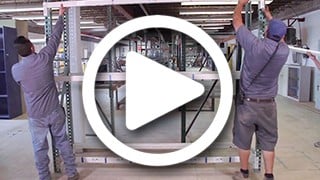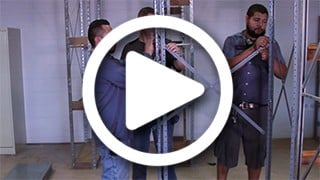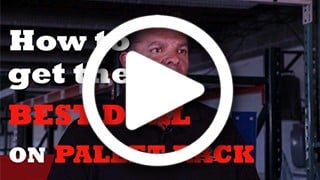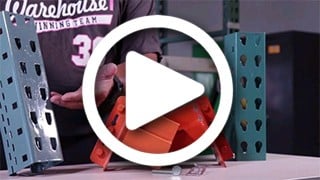Why Should I Buy Pallet Flow Rack?
Pallet flow racks utilize rollers or skate-style wheels mounted on a gentle incline inside the rack, with the rollers at the loading side slightly higher.
How Pallet Flow Racking Works
Pallets are fed into the pallet flow racking from the loading aisle and roll by force of gravity through the rack to the picking aisle at the other side. Each flow lane is normally controlled by automatic speed controllers to make the speed of all pallets consistent as they move through the lanes, no matter how heavy the pallet may be. As a pallet is removed in the picking aisle, the pallet behind it automatically advances forward to the picking position.
 |
| With higher storage density and less aisle space, pallet flow rack systems can store as much as 80% more pallets than selective rack. |
Benefits of Pallet Flow Rack
Pallet flow rack as a high density storage system has several major advantages:
- Pallet flow is a high-density pallet rack system, best suited for quick FIFO (first in, first out) stock rotation scenarios for perishables or other time-sensitive stock such as food, pharmaceuticals, etc.
- Warehouse safety is enhanced. With each aisle dedicated to just one function—loading or picking—forklift traffic follows very predictable paths, there is less congestion and forklift travel distance is reduced. This contributes to reduced potential for collisions.
- In pallet flow racking, no other arrangements of stock are necessary to assure you automatically pick the oldest stock first. Pallet flow rack eliminates additional forklift labor to rearrange the loads. Forklifts are required only for the initial loading and final unloading. Work can be performed by fewer forklifts with fewer man-hours and less fuel consumption.
- Pallet flow systems can be constructed with capacity up to 20 pallets deep in a single lane. They are adaptable to cold storage and freezers.
- Many selective pallet rack systems can be retrofitted with rails and rollers in order to convert to pallet flow.
- Because the pallet flows out to the forklift operator versus the operator driving into the rack, there is less risk of damage to stock on the pallets.
- High density storage requires smaller warehouse with less square footage to heat, air condition or illuminate, saving money.
- System is gravity-fed. No electricity or other utility power is required.
 |
| Pallet flow systems consist of uprights, beams, and pallet flow rails. As the front pallet is pulled, the following pallet advances forward into the picking position. |
Drawbacks
Pallet flow is not a perfect fit for all applications and has some drawbacks:
 |
| While pallet flow allows for more SKUs than drive-in rack, each lane should be dedicated to one SKU. Where push-back rack is best suited for LIFO (Last In, First Out) stock rotation, pallet flow is best suited to FIFO (First In, First Out). |
- Pallet flow is the most expensive of pallet rack options, approximately three times the per-pallet cost of single-deep selective rack and about twice the cost of drive-through rack.
- A pallet flow system is not suited to stock that contains many varying SKUs. Each lane should be dedicated to a single SKU or stock number.
- The system incorporates a high number of moving parts represented by the rollers and wheels. These require occasional maintenance and replacement in order to be kept free-spinning. Speed-reducing systems also require maintenance.
- Properly designed and correctly functioning “brakes” are key contributors to a smooth operation. Failing this, “hang-ups” are common and require no small amount of problem solving to free loads that get stuck.
Final Word
Pallet flow rack is a great space saving storage option if affordable and well designed.



